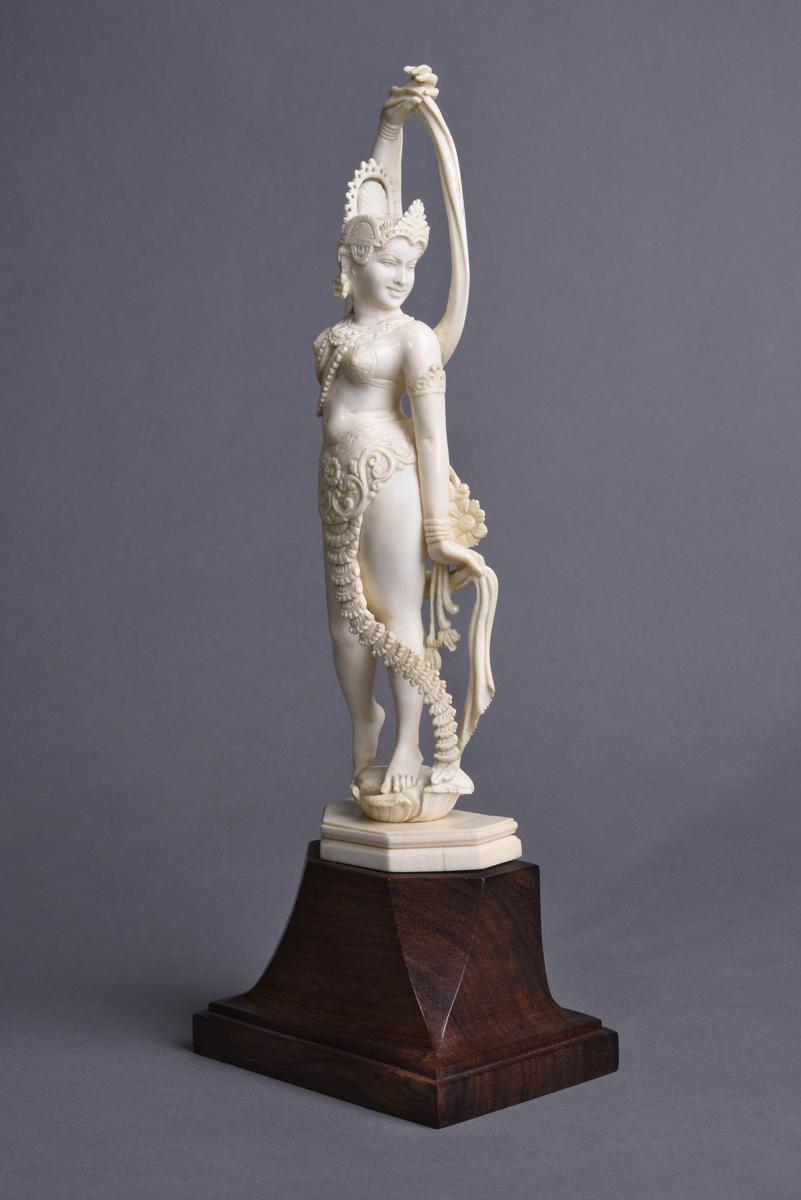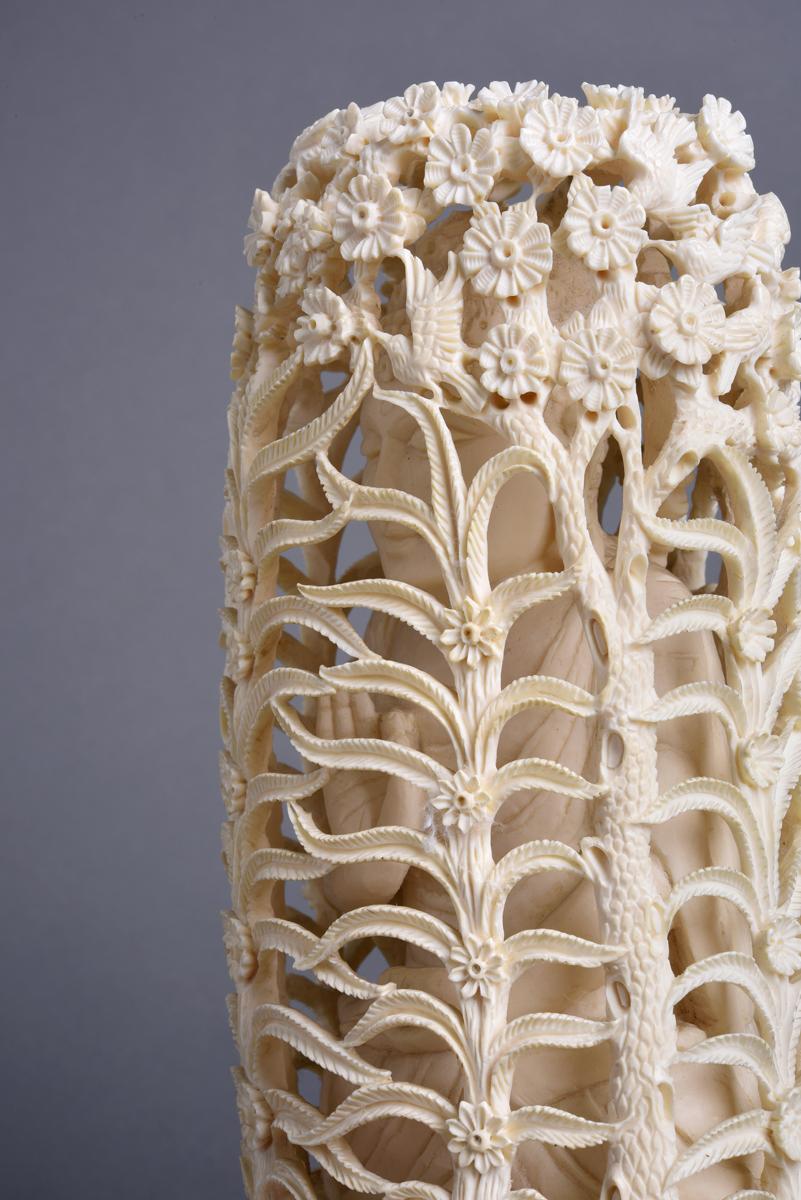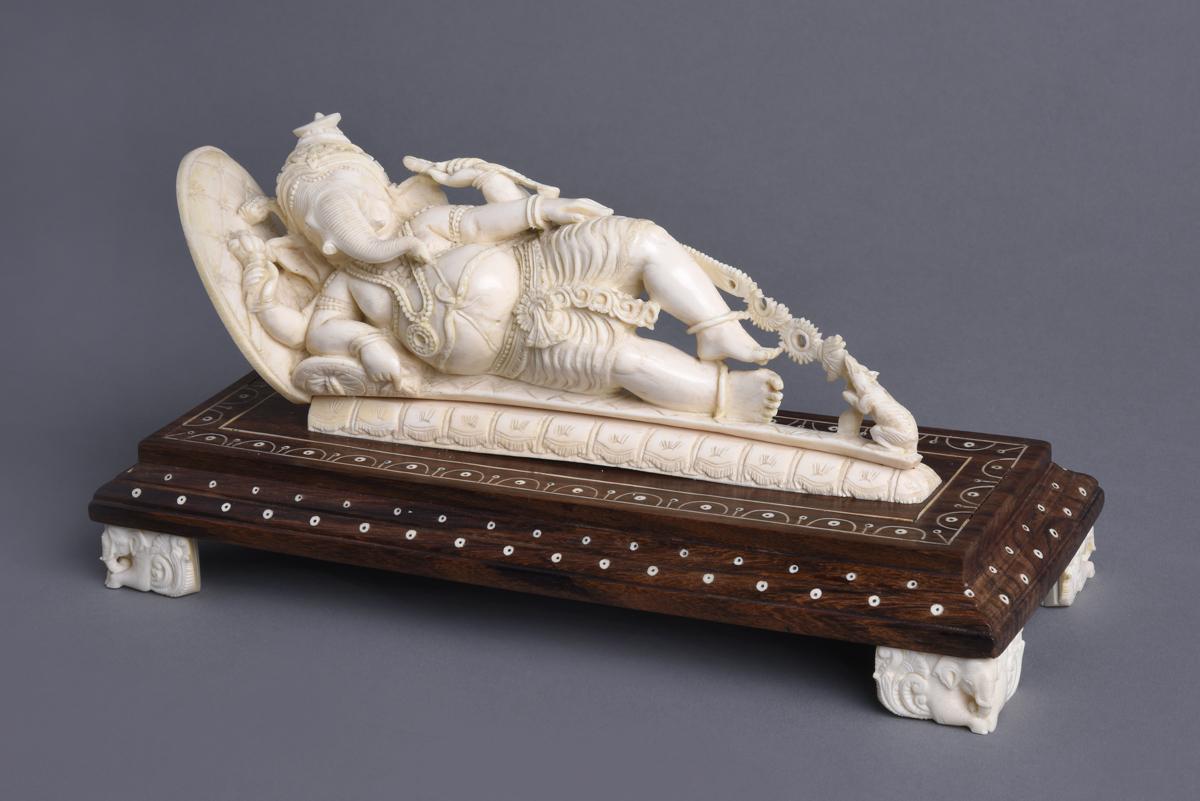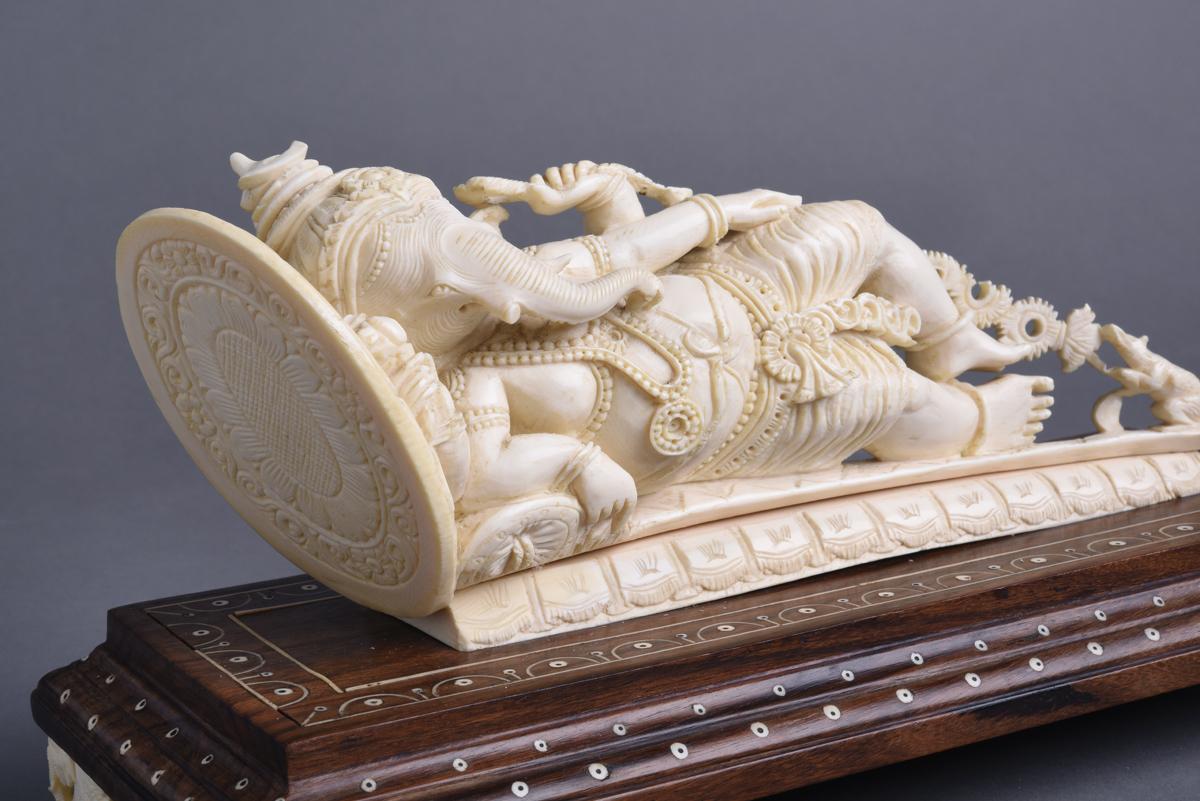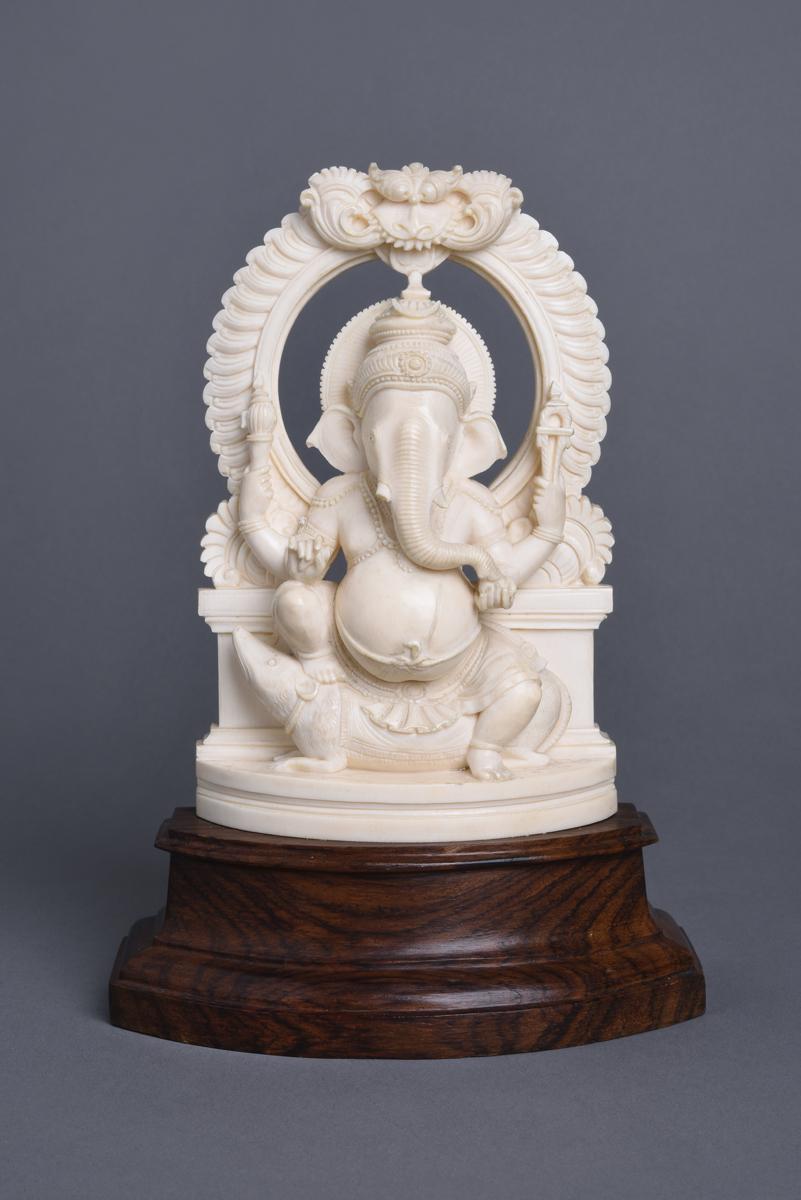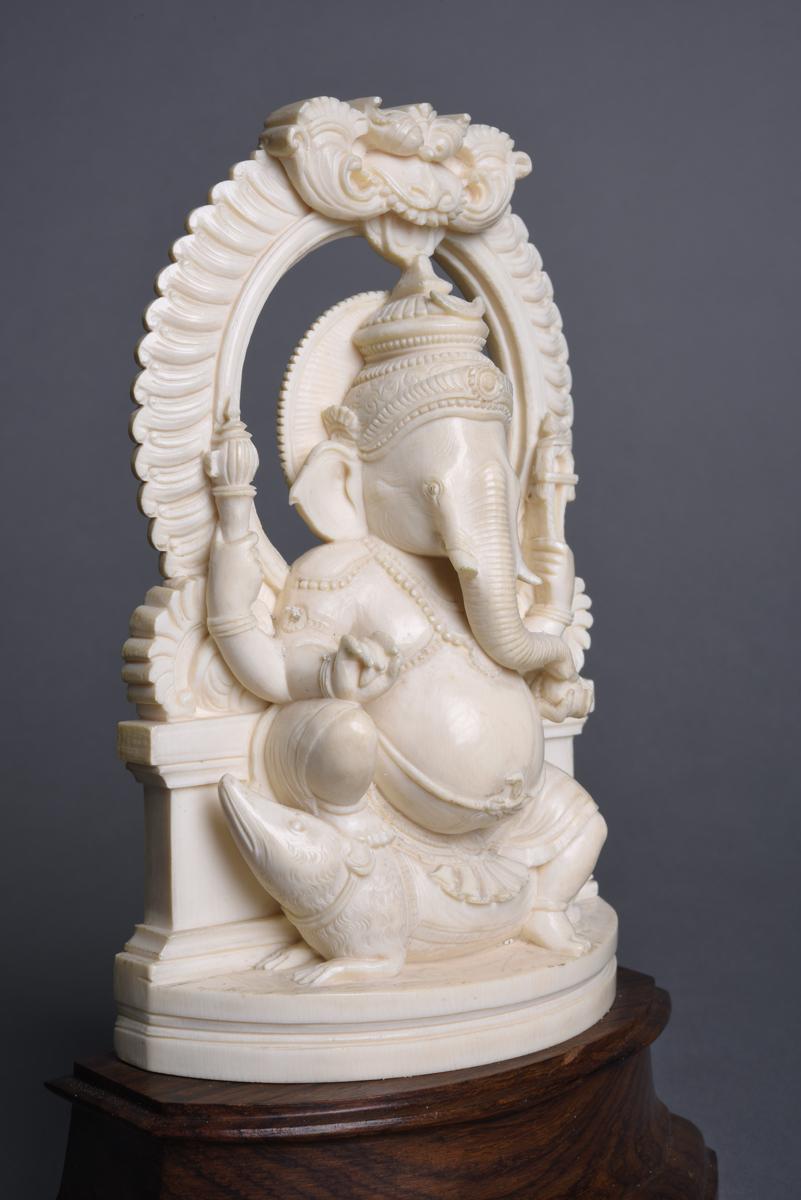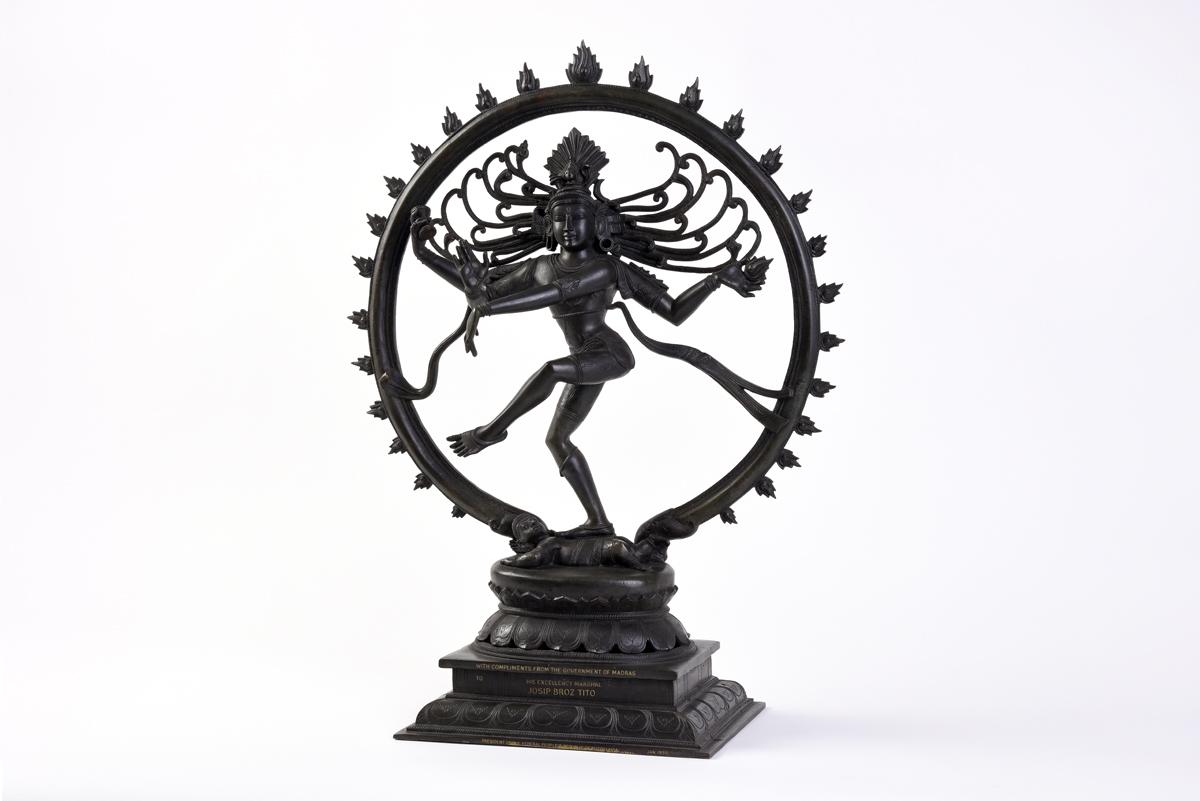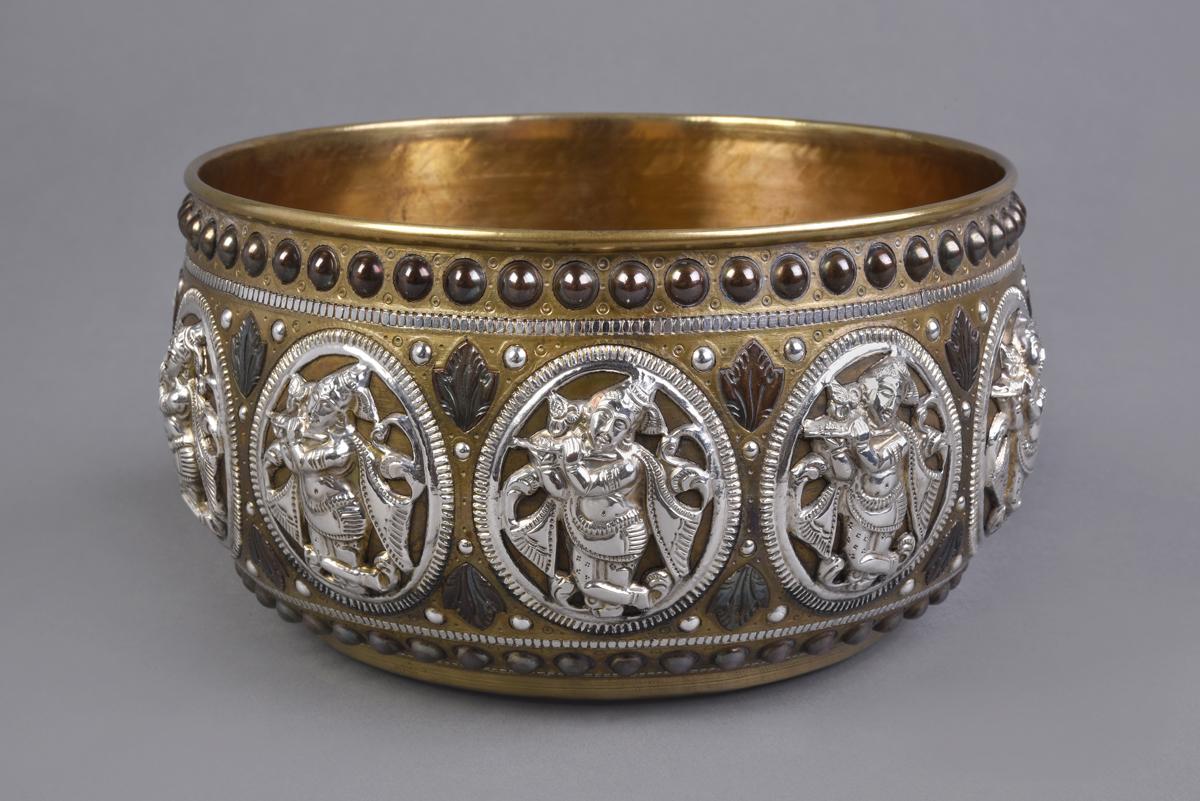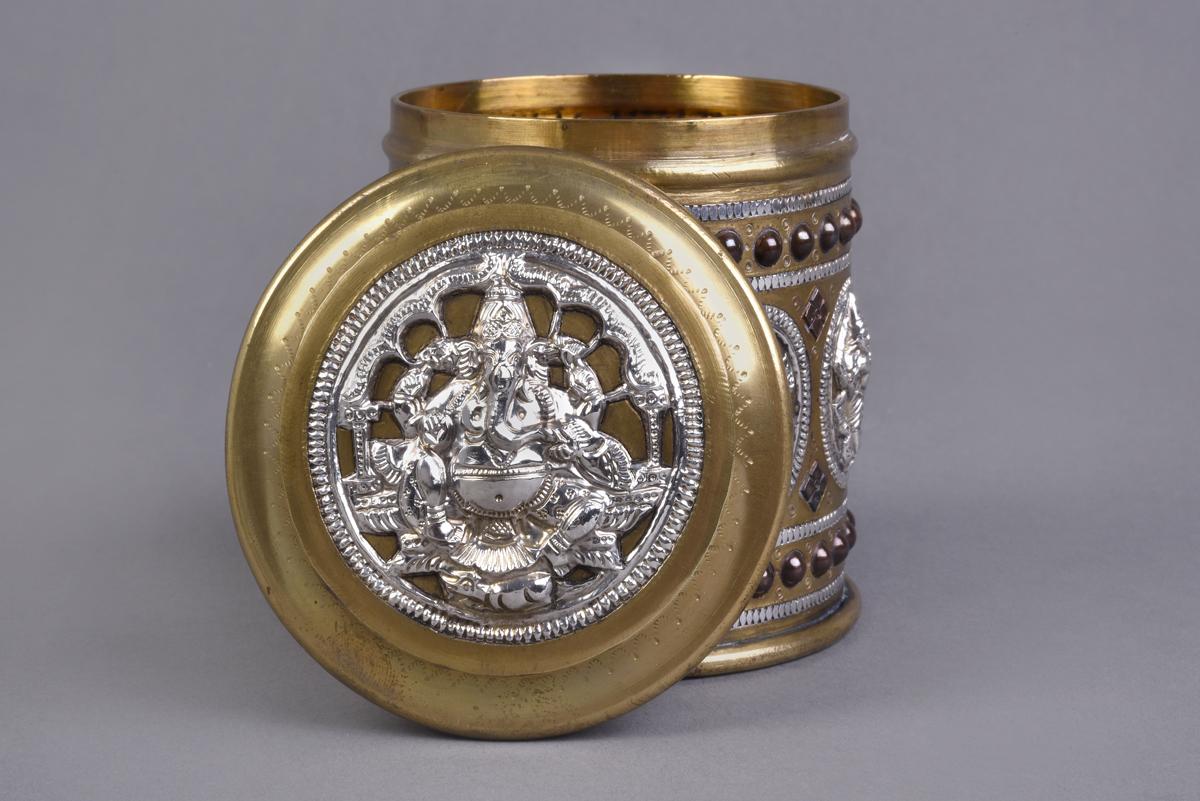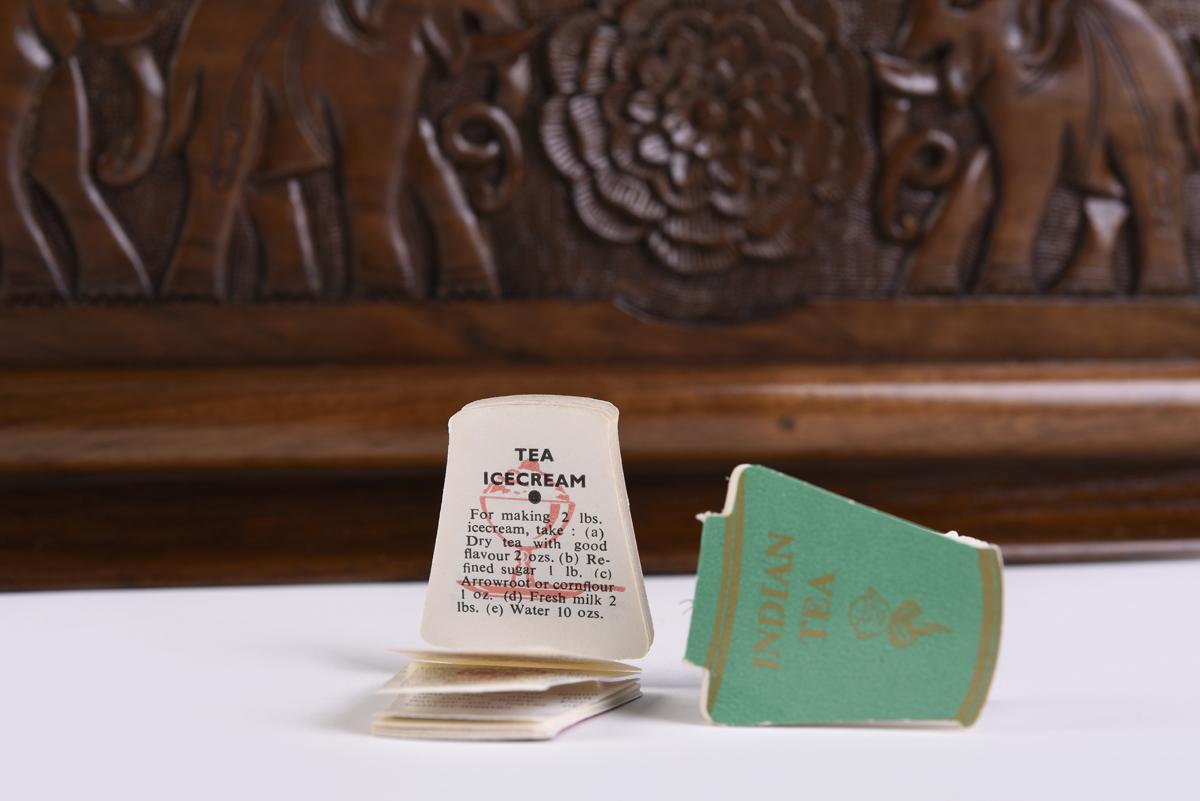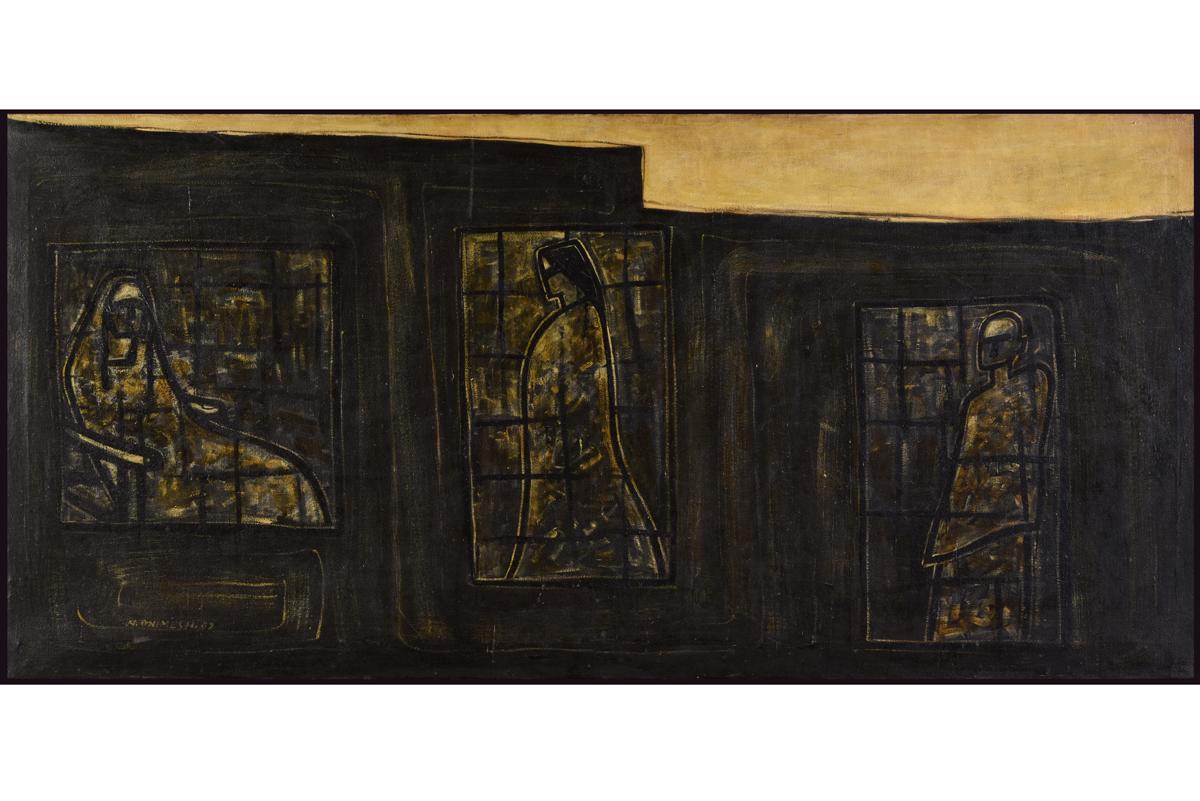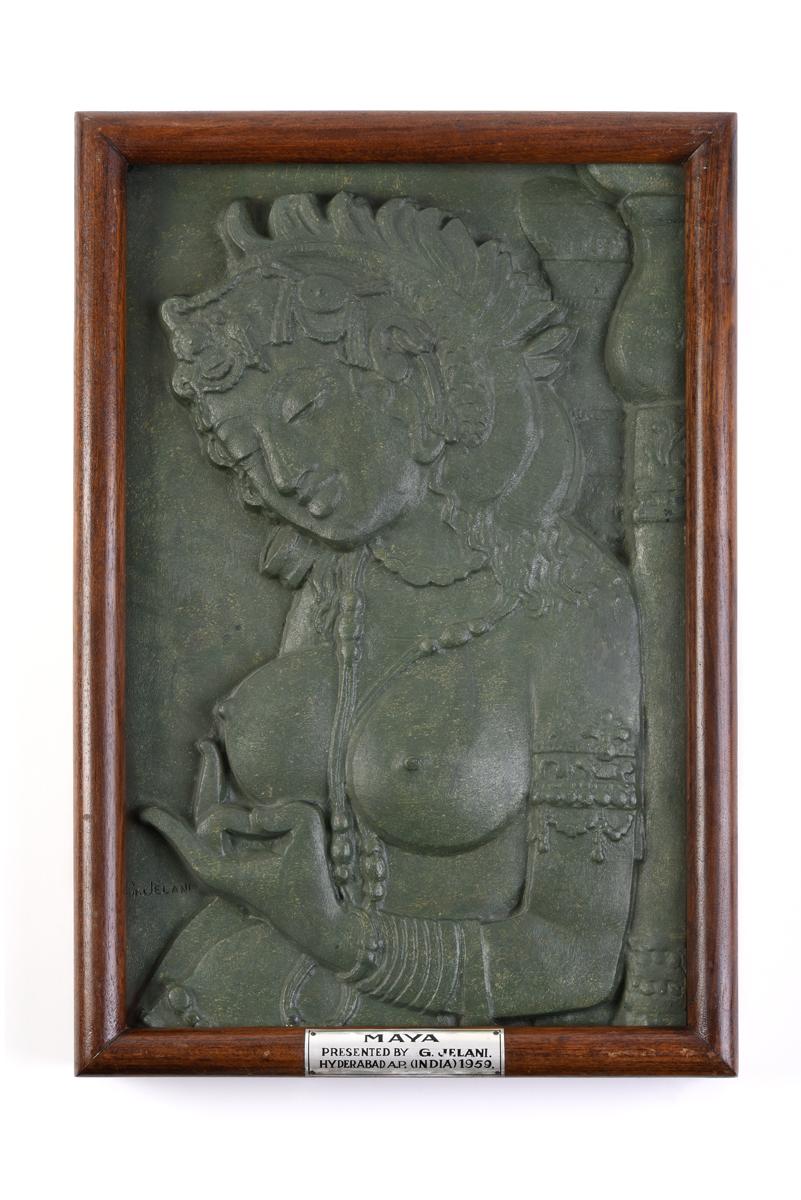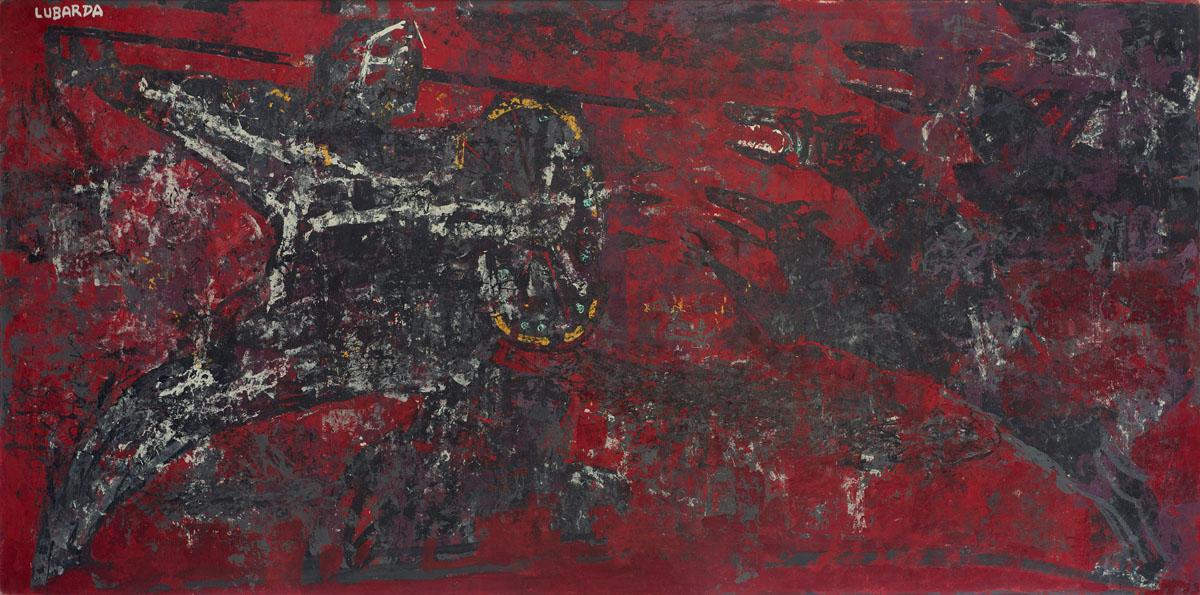The first digital expanded issue of commemorative postage stamps of the Post of Serbia contains digital materials, presented on this page, which the Post of Serbia in cooperation with the Museum of Yugoslavia makes available to those who activate QR code from the sheetlet of commemorative postage stamps ”60 years since the First Conference of the Non-Aligned Movement – Belgrade, 1961”.
The page currently contains photographs of exhibits from the exhibition ”Prometheus of the New Century” of the Museum of Yugoslavia, and after the closing of the exhibition, the exhibits that receive the most votes of visitors, in a specially organized vote in the Museum's exhibition space, will be digitalized and digital copies will be permanently available on this page.
Scale model of the Taj Mahal
Bansal Marble Emporium, Johri Bazar, Agra, India, mid-20th century
Gift of the Governor of the State of Uttar Pradesh K.M. Munshi to Josip Broz Tito during his visit to Agra, December 29, 1954
Alabaster, 48,5 × 48,5 × 48,5 cm
Inv. No. 1-7-80
The Mughal Empire, which at the peak of its power extended over the territory of today’s India, Bangladesh, Pakistan, and Afghanistan, is today mostly known for the Taj Mahal Mausoleum. It is located near the city of Agra, the first Mughal capital, which Shah Jahan designated as the grave of his favourite wife, prematurely deceased Mumtaz Mahal. The construction of the mausoleum began in 1632, and was completed in 1653. When Jahan died, he was buried next to his wife in the mausoleum, now considered one of the architectural wonders of the world. This Mughal-period pearl of Muslim architecture is the most visited monument in India and is the most visited tomb in the world.
Fighting Bulls
Gift of the Government of the Indian State of Madhya Bharat to Josip Broz Tito during his visit to Gwalior, December 27, 1954
Wood, leather, 36 × 66 × 23 cm
Inv. No. 1-7-81
At the time of declaration of independence in 1947, India was a mosaic of different administrative territories. Among them, over 550 princely states stood out, in which local rulers had complete power. In order to win them over and incorporate them into the newly established state, the Indian authorities appointed them governors of newly formed administrative units. One such unit was Madhya Bharat in central India, made up of 25 smaller princely sub-states; Jivajirao Scindia, the Maharaja of Gwalior, was appointed governor.
Scale model of the Bhakra Dam
India, mid-20th century
Gift to Josip Broz Tito during a visit to the construction site of the Bhakra-Nangal Dam and hydro-power plant system on December 23, 1954
Wood, plastic, metal, 30,5 × 36 × 18,5 cm
Inv. No. 1-5-468
Bhakra is a 226-meter-high concrete gravity dam, one of the tallest structures of its kind in the world. It is located on the Sutlej River in northern India, and is part of a system of dams and hydroelectric power plants that supply electricity and water to the northern Indian states: about 1/10 of Indian territory. The construction of the Bhakra dam began in 1948, soon after India gained independence, and the entire system was completed in 1963. Nehru called the Bhakra dam ‘the temple of reborn India’.
Scale model of a screen
India, mid-20th century
Gift of the citizens of New Delhi to Josip Broz Tito, New Delhi December 19, 1954
Ivory, 43 × 53 cm
Inv. No. 1-7-82
The ivory screen model was given as a gift to Broz when he was declared an honorary citizen of New Delhi. The ceremony took place in the Red Fort, one of the jewels of Mughal architecture, which, along with the Taj Mahal, was built by order of the ruler Shah Jahan. This locality has a distinct symbolic significance for modern India, since Jawaharlal Nehru raised the new flag here, which marked the beginning of Indian independence on August 15, 1947.
Table lamp
India, mid-20th century
Gift of the Government of the Indian state of Uttar Pradesh to Josip Broz Tito during his visit to India, Lucknow, December 30, 1954
Ivory, 30 × 12 × 12 cm
Inv. No. 1-7-83
Ivory has been used to make a variety of objects for everyday use, as well as for the production of decorative and artistic objects, since prehistoric times, and has always been considered a very luxurious and expensive material; it was believed to be the only everlasting material of organic origin. African ivory is used in India because Asian elephant tusks do not have as fine a texture and are smaller in size; Asian ivory yellows over time, and is not as easy to polish. In India, ivory is softened by wrapping it in damp cloth to make it easier to carve. A lathe has often been used in this work since the middle of the 20th century.
Scale model of a HT-2 two-seat primary trainer
Bangalore, India, mid-20th century
A gift from the Hindustan Aircraft Limited (now Hindustan Aeronautics Limited) workers during a visit to the factory on January 22, 1955
Wood, metal, 30 × 39 × 34 cm
Inv. No. 1-5-374
The Hindustan Aircraft Limited factory was founded in 1940 as an aircraft repair shop. In the period after India gained independence, it grew into the largest aircraft factory in India, and the HT-2 was the first aircraft fully manufactured in this factory. Branko Ivanuš, a Yugoslav pilot accompanied by Broz, tested the HT-2 and compared it to the Aero-2 produced in the Yugoslav Ikarus factory. Experienced military pilot Ivanuš described the HT-2 as “suitable for training, durable in acrobatic exercises, and with up-to-date equipment.”
Scale model of a locomotive
Chittaranjan, India, mid-20th century
Gift of the Chittaranjan Locomotive Works workers during the visit to the factory, January 3, 1955
Wood, metal, glass, 28,5 × 19 × 17,5 cm
Inv. No. 1-5-462
A visit to Chittaranjan Locomotive Works was the last point on Broz’s eighteen-day visit to India. The factory, founded in 1950, was India’s largest builder of steam locomotives.
Lakshmi
India, second half of the 20th century
Gift to Jovanka Broz at the exhibition of folk handicrafts in New Delhi, 1971
Ivory, 23 × 8 × 4,8 cm
Inv. No. 1-7-84
Lakshmi is the goddess of wealth and prosperity: the goal of life, both material and spiritual.
She is closely associated with the lotus on which she stands, a flower that grows from the mud and blooms on the surface of the water, symbolically representing birth in the material world, overcoming of this material world, and final realization in the spiritual realm. Devotees offer sacrifices to her in every store, and in every house.
Parvati
India, second half of the 20th century
Gift to Josip Broz Tito at the exhibition of folk handicrafts in New Delhi, 1971.
Ivory, 28,5 × 10,5 × 7 cm
Inv. No. 1-7-85
Parvati is one of the aspects of the great goddess Devi, the mother of everything and one of the wives of the god Shiva. She is a daughter of the Himalayas and mother of the god Ganesha.
Buddha in deep meditation under the Bodhi wisdom-tree
New Delhi, India, second half of the 20th century
Gift of the Yugoslav personnel in New Delhi to Josip Broz Tito and Jovanka Broz during a visit to India, 1971.
Ivory, 28 × 16,5 × 13,5 cm
Inv. No. 1-7-86
The Buddha was a monk, sage, philosopher and religious leader on whose teachings Buddhism, one of the five largest religions in the world, is based. It is believed that he lived and worked mainly in the northeast of ancient India in the period between the sixth and fourth centuries BC. The Buddhist art of India developed under the strong influence of Hellenism, Rome and Roman styles, so it is assumed that the Buddha figure was created at that time as a result of the influence of Hellenistic art (especially Apollo’s figure) on autochthonous elements.
Ganesha
Kerala, South India, first half of the 20th century
Ivory,13 × 28 × 11 cm
Inv. No. 1-7-87
Ganesha’s large bulging belly is the embodiment of his lustful yet graceful nature. Ganesha is an extremely popular deity invoked when one starts new ventures. He is considered the patron of every type of business, and entrepreneurs organize rituals in his honour.
Ganesha
Kerala, South India, first half of the 20th century
Ivory, 20,5 × 14 × 7,5 cm
Inv. No. 1-7-88
Ganesha is the god of wisdom; he has the head of an elephant and the body of a boy, and he rides on a mouse’s back. He is responsible for removing obstacles that stand in the way of enlightenment, and he brings people success.
The Ganesha sculptures carved in these positions were located on the outer walls of temples, and were the first thing visitors encountered on entering.
Shiva Nataraja (“Lord of the Dance”)
Gift of the Government of the State of Madras to Josip Broz Tito during his visit to India, 1959
Metal, 65 × 51 × 25 cm
Inv. No. 1-3-833
In Hinduism, as in Christianity, there is the idea of a trinity of the highest. This triumvirate of gods consists of Brahma, Vishnu and Shiva, the supreme deities who control the infinite cycles of time and initiate creation and destruction. In this conception, Shiva, whose dance controls the movement of the entire universe, is a destroyer, but not necessarily considered bad, as without destruction there can be no re-creation.
Dessert Dishes
Tanjore (Thanjavur), India, circa 1950
Given as gift to Josip Broz Tito during his visit to India, Madras, 1959
Brass, copper, silver
Diameter of large dishes 15,5 cm, height 8,5 cm; diameter of the dish with the lid 8 cm, height 9,5 cm
Inv. No. 1-7-90 (k. 1-3)
The dishes belong to a category of Swami-made decorative objects, characteristic of the southern part of India, centred in Tanjore. All three dishes depict the deities of the Hindu pantheon. The dish with a lid depicting the god Ganesha has eight medallions on the central frieze, with alternating depictions of the goddess of art teaching Saraswati with a swan, and Venugopala Krishna playing the flute at the celebration of cow-girls; the other two dishes depict Krishna, avatar (earthly form) of the god Vishnu in eleven medallions on the central frieze.
Box and Tray
A gift from the Association of Indo-Yugoslav Friendship to Josip Broz Tito
Wood
Box: 9 × 28 × 19 cm; lid: 47 × 28 cm
Inv. No. 1-7-89 (k. 1-2)
Cigar Box
Gift of the Yugoslav Club to Josip Broz Tito during his visit to India, New Delhi, January 28, 1974
Metal, silver, 18 × 12 × 5 cm
Inv. No. 1-7-79
There were a dozen informal Indo-Yugoslav associations that were formed without the initiative of the Yugoslav embassy, but the embassy maintained regular ties with them, supplying propaganda materials and organizing public cultural events. Through the embassy, the associations regularly sent gifts on public holidays.
Jewellery Box
Gift of the interracial married couple Nada and Veda Ahuja from India to Josip Broz Tito for his 85th birthday, 1977.
Wood, 22 × 22 × 10 cm
Inv. No. 1-3-834
There is a birthday card with the image of Gandhi and the text in the box:
Our dear comrade Tito,
We are proud and happy
That we can wish you
Happy 85th birthday,
And send our best wishes
For your long life and good health,
With the warmest compliments
On the occasion of the 40th anniversary of your arrival
At the head of our Party.
With much love and respect,
Indo-Yugoslav family
Nada and Ved Ahuja with children:
Kamal, Renato and little Nandi
We greet you warmly
Tea Box
Wood, 45,5 × 28,5 × 21 cm
Inv. No. 1-7-91
The box, in the form of a chest with a key, depicts elephants in its central frieze and features floral motifs. It contains two booklets with recipes for serving Indian tea, which was probably part of the set. We can see this box in a photo taken at the Indian National Exhibition held at the Belgrade Fair in 1965, when it was probably given as a gift to Josip Broz Tito.
Vidya Bhushan
Flying Bodhisattva (replica of a fresco from Ajanta), 1959
Gift of the author to Josip Broz Tito
Oil painting on cardboard lined with paper on a board, 90 × 106 cm
Signed in the lower right corner: В V. Bhushan 59 INDIA
Inv. No. 1-2-136
This painting, with images of Indra and Apsara, is a replica of the fresco in cave XVII from Ajanta. Ajanta is a complex of 29 cave temples, in which are preserved the largest gallery of paintings from the ancient period, and the most beautiful Buddhist frescoes in India.
The author resided in Yugoslavia during 1954/55 as a scholarship holder of the Yugoslav Government; he applied as the head of the Painting Department of the State Art School in Hyderabad. He studied fresco painting with Milo Milunović in the State Master Workshop.
Animesh Nandi
I - India, 1962
Gift of the author to Josip Broz Tito, 1970
Ulje na platnu, 88 × 182 cm
Signed in the lower left corner: N. Animesh 62
Inv. No. 1-2-481
The author graduated in 1961 in Calcutta and was in Yugoslavia between 1965-1968 as a scholarship holder of the Federal Commission for Cultural Relations with Foreign Countries. He received his master’s degree from the Faculty of Fine Arts in Belgrade in 1967, and exhibited twice at the ULUS; he became a member of the ULUS in 1972, and worked as a freelance artist in Yugoslavia in the period 1969-1982.
Gulam Jelani
Maya, Buddha’s mother, 1959
Gift of the author to Josip Broz Tito during his visit to India, Hyderabad, 1959
Relief in plaster, 46 × 31 cm
Signed in the lower left corner: G. Jelani
Inv. No. 1-2-737
The author came to Yugoslavia as the head of the Sculpture Department of the State Art School in Hyderabad, and worked as a scholarship holder of the Yugoslav Government during 1954/55 in the State Master Workshop of Fran Kršinić in Zagreb. His work was assessed as “worthless” by Frano Kršinić, in whose master workshop Jelani worked; in Kršinić’s opinion, Jelani could have passed neither the entrance exam nor a first year exam of any Academy of Fine Arts in Yugoslavia.
Gangadhar Balkrishna Wad
Mother Coexistence
Author’s gift to Josip Broz Tito as a small token of gratitude to the main builder of the Belgrade Conference, 1962
Tempera on cardboard, 33 × 70 cm
Signed in the lower right corner: Gangadhar Balkrishna Wad
Inv. No. 1-2-176
The painting depicts Mother Earth feeding a black and white child with equal love, while the abstract elements around her represent the diversity of numerous nations and states. It was exhibited in a solo exhibition that Wad opened a month earlier in the Gallery of the Cultural Centre of Belgrade after a fifteen-month stay in Yugoslavia, a period during which he studied fresco painting in monasteries as a scholarship holder of the Yugoslav government.
Petar Lubarda
The Awakening of Africa, 1956-1959
Gift of the People’s Committee of the Municipality of Ivangrad to Josip Broz Tito, 1959
Oil on canvas, 114 × 146 cm
Signed in the upper right corner: Lubarda
On the back, top: Awakening of Africa, painting started in 1956 - finished in 1959
Inv. No. 1-2-632
The painting was exhibited at the exhibition of paintings by Petar Lubarda in the Cultural Centre of Belgrade, which opened a new exhibition space in the House of the Press before the First Conference of the Non-Aligned in 1961, as a ‘showcase’ cultural event along with the founding conference that clearly speaks of Lubarda’s role in cultural policy.
Petar Lubarda
Prometheus, 1967
Gift of Montenegrin working collectives to Josip Broz Tito for his 75th birthday, 1967
Oil on canvas, 70,5 × 202 cm
Signed in the upper right corner: Lubarda 1967.
Inv. No. 1-2-633
Petar Lubarda stayed in India in 1963 at the invitation of the Commission for Cultural Relations with Foreign Countries, and was among the first European artists to exhibit in India. For him, the visit to India was cathartic and under the influence of the discovery of another world, Lubarda’s art changed once again through a return to primitive, basic, matter: water and fire.
The character of Prometheus is one of the strongest characters of Greek mythology, because he represents the embodiment of courage, pride and defiance, great philanthropy, and the pursuit of freedom. Even today, he is a symbol of the struggle for progress and happiness of mankind.
Petar Lubarda
Taurus and the Cloud (India), (1963)
The Heritage House, Belgrade
Nitrocellulose varnish on hardboard, 205,5 × 161,5 cm
Signed in the upper right corner: Lubarda; lower left corner: Taurus and the Cloud
On the back, top left: Lubarda 1963 Vera; top right Taurus and the Cloud size 162 × 208; bottom right: type of work varnish technique
Inv. No. KL PL 9
After a multimonth stay in India in 1963, under the influence of a new world and a different culture, Lubarda’s art experienced its last change. India brought a new inspiration in which a distant and unknown world returned the artist to primordial originality, myth, fairy tales and a new idea of eternity. Under the influence of such mythology, the artist created an unusual world of winged animals and beasts whose true meaning is sometimes difficult to explain. The themes he turned to are suitable for the classic Lubardian feature of constantly disappearing and re-returning to the subject. The artist started using synthetic binders and nitro varnishes in his work, the colour is shiny, sharp, industrial and it bleeds, whereas the depth of the painting is usually reduced to one flat surface.
Petar Lubarda
The Man and the Beasts, (1964)
The Heritage House, Belgrade
Oil on canvas, 200 × 400 cm
Signed in the upper left corner: LUBARDA
Inv. No. KL PL 23
The monumental painting The Man and the Beasts is a metaphorical depiction of the city of Belgrade, according to Lubarda’s wife Vera. The three-headed beast is opposed by the heroic figure of a mounted warrior with sword and shield; using deep layers of ‘lipstick red’ and black, the artist abolishes clear lines and in their place develops the contour and space of the painting. The story of this painting is the story of Petar Lubarda and Belgrade, about which the artist said, “for me, Belgrade is not just a city – it is a man, warm, fraternal, hospitable...” The painting carries a universal meaning of the constant human struggle to, as the artist himself said, overcome darkness and the striving to illuminate it.














